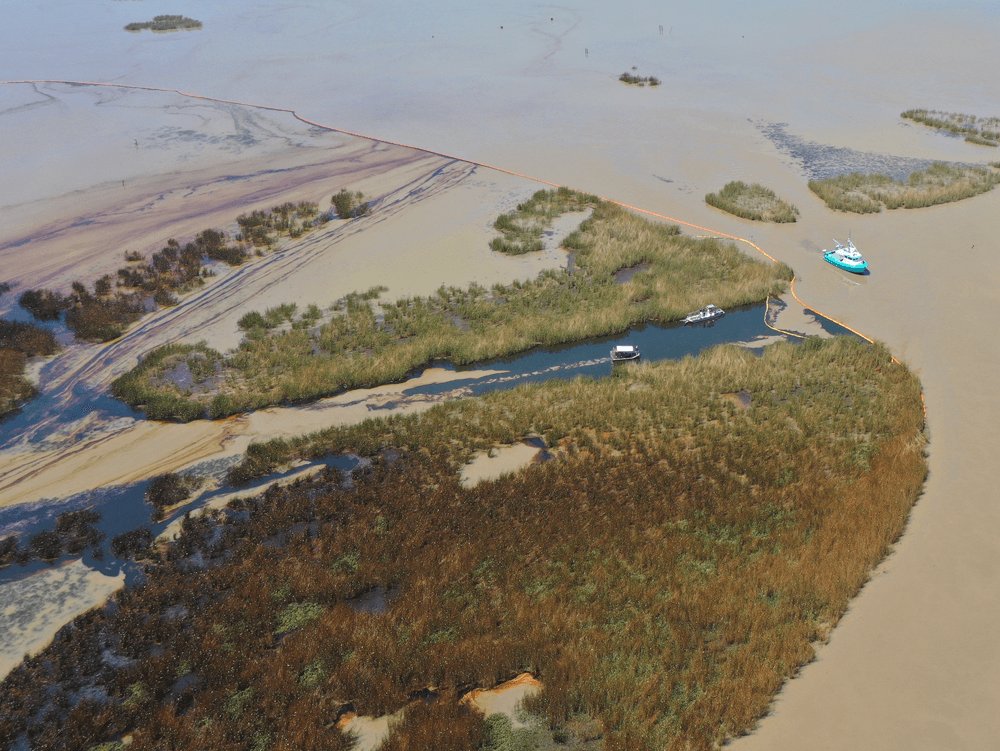The crude oil spill near Pass a Loutre in the Mississippi Delta is winding to a close – and in a dramatic fashion. With the well secured and most cleanup completed, the Coast Guard plans to burn off the remaining crude oil in the marshland surrounding the well site.
The abandoned well began spraying a mist of oil and gas into the air in a marsh near Garden Island Bay on April 26, releasing an unknown quantity of petroleum into the environment. The Coast Guard formed a unified command with the responsible party, but after six days, the service decided to federalize the response and tapped the Oil Spill Liability Trust Fund.
A well control contractor responded to the scene, but because of the relatively remote location the mobilization process took time. On May 4, the contractor cut the flange on the discharging wellhead, then installed a flowback assembly to gain control of the source and shut off the leak.

Oil mist spraying from the wellhead, May 2025 (USCG)

Oiled marshland near the wellhead, May 2025 (USCG)

Well control contractors prepare to cut the flange on the leaking well (USCG)
As of May 14, spill response contractors have recovered 115,000 gallons of oily-water mixture. The amount of oil discharged from the well is not known, and residue remains within a confined area that is surrounded by booms.
The remaining oil is within a floating marsh habitat, and the area isn’t accessible for mechanical recovery, the Coast Guard said. Instead, the best available option is an in-situ burn.
“The decision to implement an in-situ burn was based on careful evaluation of environmental conditions and guided by our commitment to minimize long-term impacts to the ecosystem,” said Capt. Gregory Callaghan, Commander, Sector New Orleans and Federal On-Scene Coordinator.
T&T Group was contracted to conduct the in-situ burn, which was scheduled to begin Wednesday.